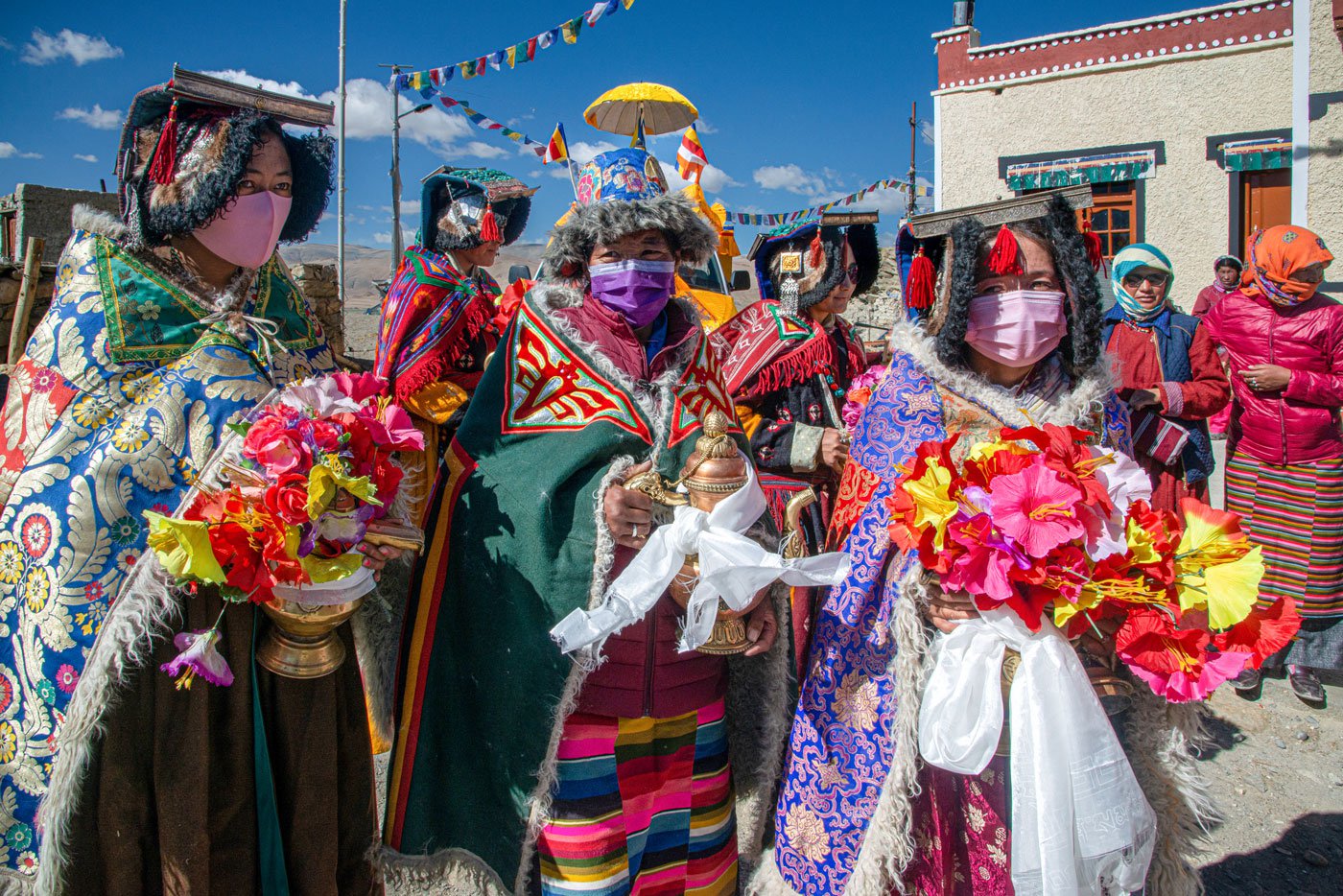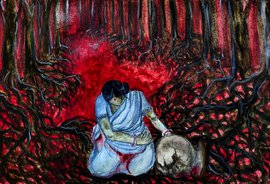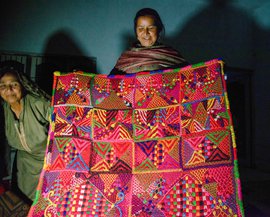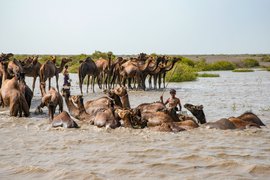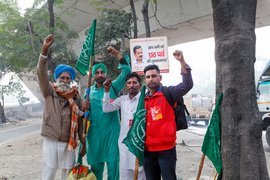“It’s a perfect day for celebration. Even the weather is lovely,” said Pema Rinchen, a daily wage worker on road construction sites here in Leh district.
A resident of Hanle (also spelt Anlay) village in Ladakh, 42-year-old Rinchen is referring to Saga Dawa
,
an important festival in the Tibetan calendar. It is celebrated by Buddhists in Ladakh, Sikkim and Arunachal Pradesh.
“Earlier, every hamlet used to celebrate Saga Dawa in their respective areas. But this year [2022], six hamlets came together," says 44-year-old Sonam Dorje, a resident of Naga hamlet who works at the Indian Astronomical Observatory in Hanle. After two years of restricted celebrations during the Covid-19 pandemic, the hamlets of Punguk, Khuldo, Naga, Shado, Bhok, and Zhingsoma came together to celebrate. These sparsely populated hamlets are a part of Hanle village which has a population of 1,879 persons (Census 2011).
Celebrated by the Mahayana sect of Buddhists, Saga Dawa, also called Saka Dawa, is observed on the 15th day of the fourth month of the Tibetan lunar calendar. In the year 2022, it fell in the month of June. In the Tibetan language, ‘ saga ’ is the number four and ‘ dawa ’ is month. The month of Saga Dawa is known as the ‘month of merits’ – good deeds performed during this period are said to be rewarded many times over. The festival commemorates the Buddha and marks his birth, enlightenment, and parinirvana , or complete nirvana.
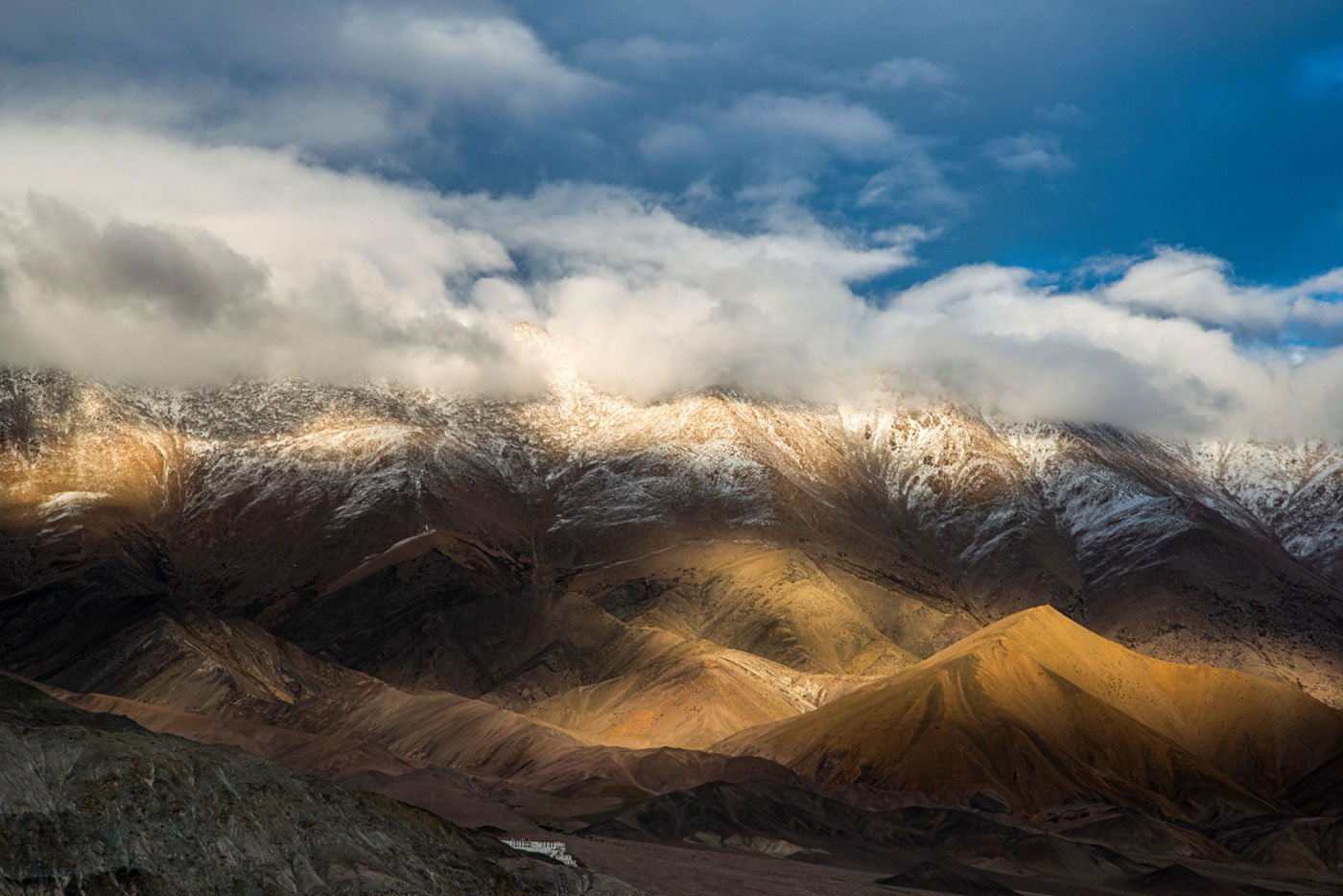
Chanthang is the western end of the Tibetan Plateau. The 17th century monastery in Hanle is situated on a mountain top here. It belongs to the Tibetan Drukpa Kagyu sect of Buddhists
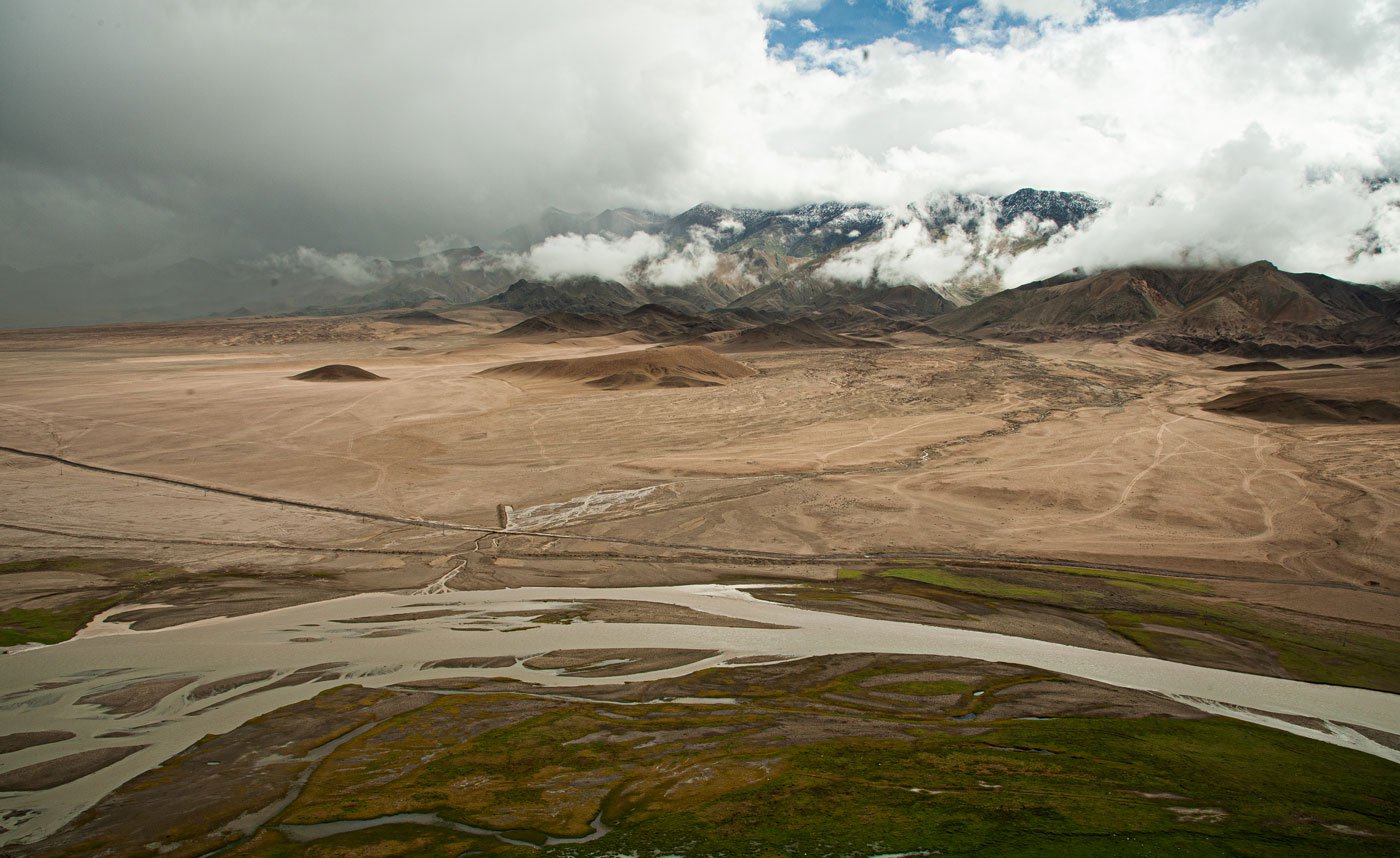
The Hanle River Valley is interspersed with lakes, wetlands and river basins
A large majority of the population – roughly 66 per cent in Leh district of Ladakh – are Buddhists (Census 2011). Ladakh became a union territory in October 2019. Much of eastern and central Ladakh’s population is of Tibetan origin and many festivals are celebrated at Buddhist monasteries in the area.
On Saga Dawa, Tibetan Buddhists spend the day visiting monasteries and temples, giving alms to the poor and chanting mantras.
Pastoral nomadic communities like the Changpas of Hanle River Valley in eastern Ladakh who follow Buddhism, attach great significance to Saga Dawa. This reporter visited Hanle River Valley about 270 kilometres south-east of Leh district's headquarters in the summer of 2022 to witness the festival. A scenic and rugged territory near the India-China border, the valley is marked by vast stretches of empty land, snaking rivers and towering mountains all around. It is part of the Changthang Wildlife Sanctuary.
It’s 8 a.m. on festival day and at the local monastery in Hanle village, the procession is about to begin. Dorje, head of the festival’s organising committee is leading the procession that is carrying the Buddha’s statue. By 8:30 a.m. the premises are packed with devotees from the village and participating hamlets. Women are dressed in traditional long gowns known as
sulma
and hats called
nelen.
Sonam Dorje and his friends hoist the Buddha out of the
gompa
(monastery) and place the statue on top of a matador van. The vehicle is covered with festive prayer flags and resembles a colourful chariot. The convoy of approximately 50 people makes its way in cars and vans towards the Hanle monastery, a 17th-century site associated with the Drukpa Kagyu order of Tibetan Buddhism.

Sonam Dorje (left) and his fellow villagers carry the Buddha idol from the Mene Khang monastery of Khuldo for the festival
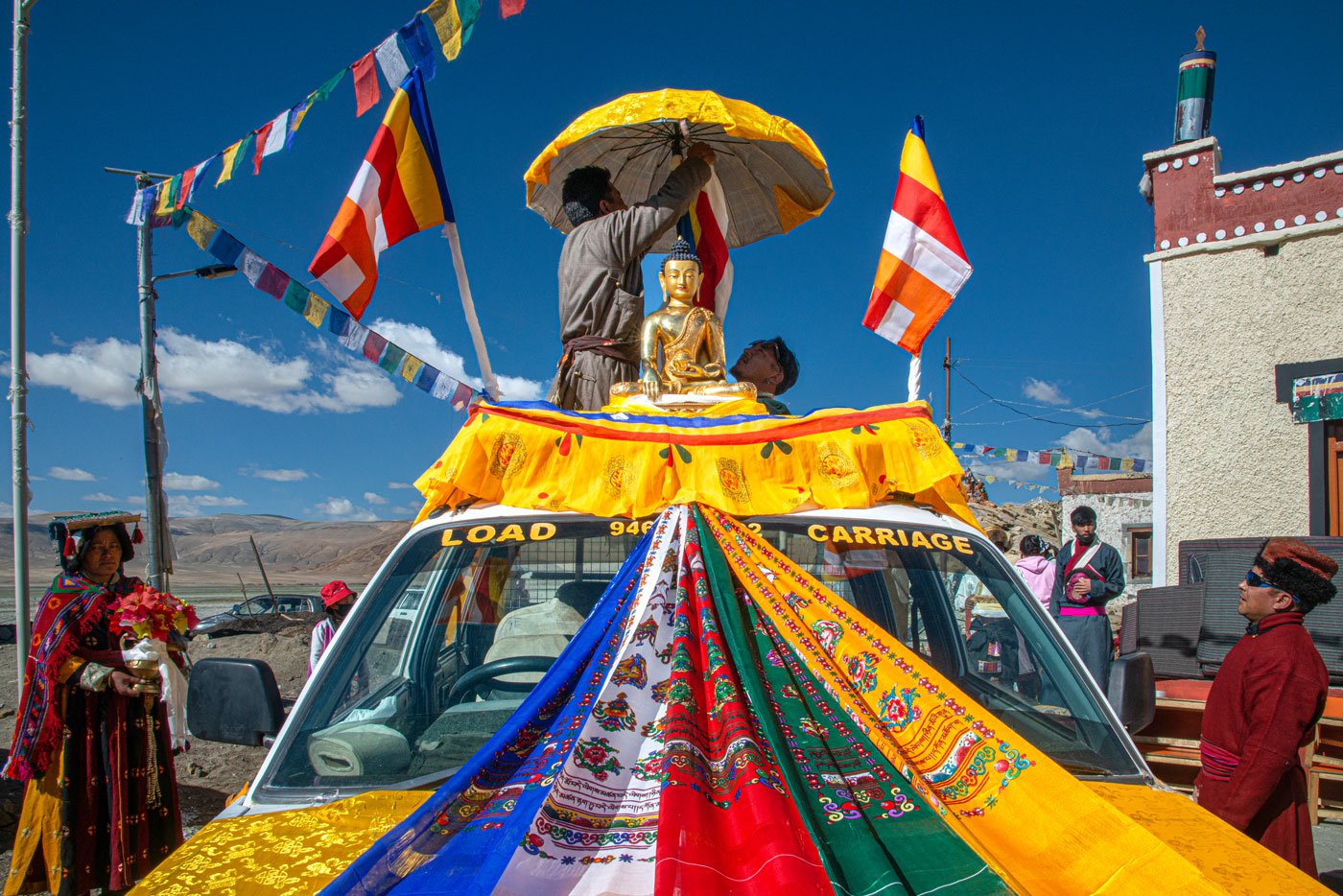
The idol is placed on a matador van covered with Tibetan prayer flags which are arranged in a specific order. Each colour in the flag represents an element and together they signify balance
At the monastery in Hanle, Buddhist spiritual teachers or lamas wearing red caps greet the convoy. As the devotees enter the premises, the sound of their voices echo through the premises. "We expect more devotees to join the festivities,” says Pema Dolma a resident of Hanle, in his mid-40s.
The celebrations get underway with the beating of drums and blowing of trumpets. The procession is off. Some are holding Buddhist scriptures wrapped in a yellow cloth.
The procession descends down a steep slope with
lamas
leading from the front. They circle the sanctuary within the monastery. The crowd then breaks up into a group of
lamas
and another of devotees and piles into two matador vehicles. They will now drive along the hamlets of Khuldo, Shado, Punguk, Bhok and end up at Naga.
At Khuldo the devotees are greeted with buns, cold drinks and salt tea. At Punguk, the lamas and devotees circle the nearest mountain and walk along streams and grasslands under a bright blue sky.
When we reach the village of Naga,
lama
Jigmet Doshal greets us saying, “How do you find the day? It is lovely, isn't it? This is also known as the month of merit. We must study more to understand the philosophies hidden behind the holy books.”
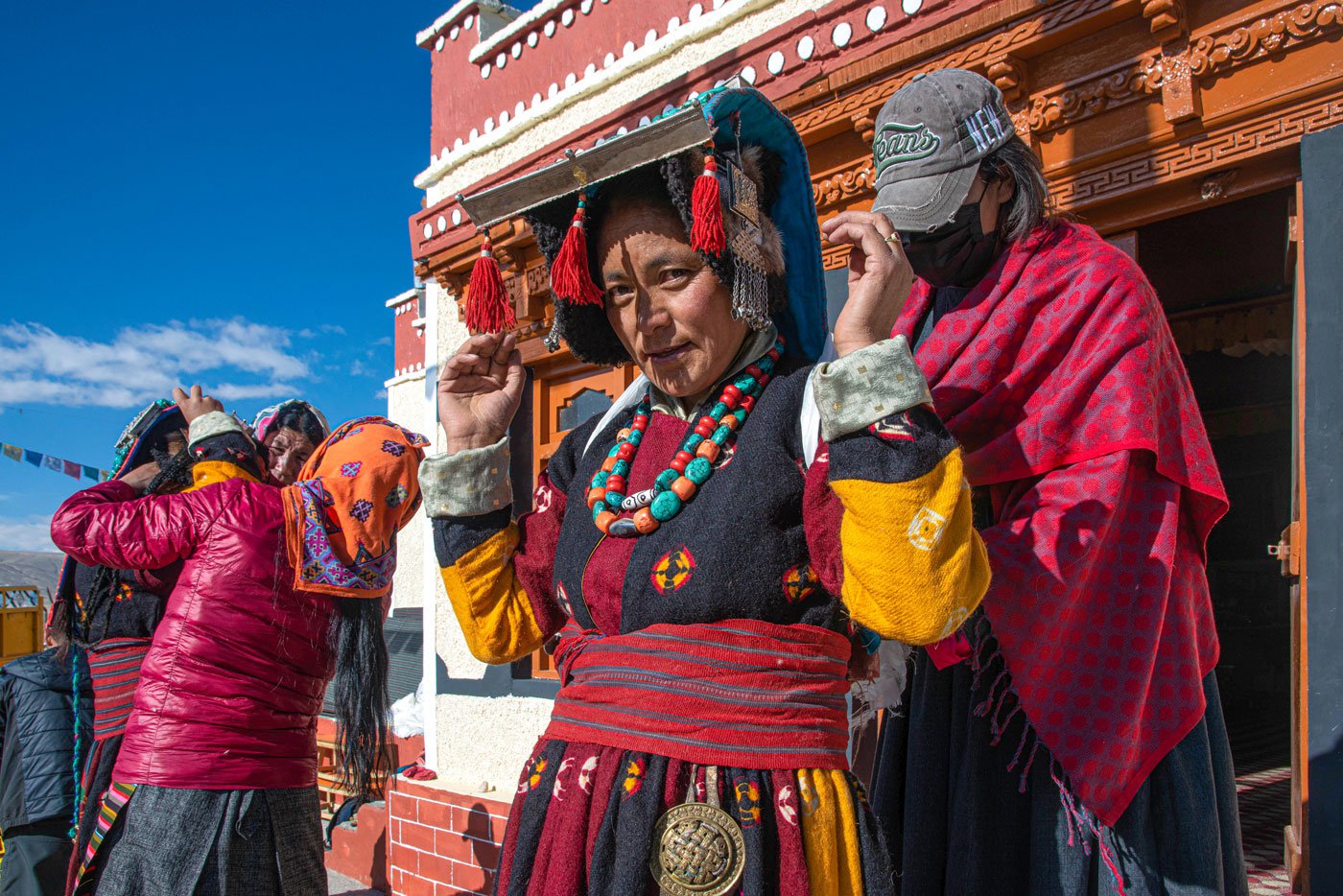
Anmong Siring, 44, is getting ready for the festival. She is dressed in sulma , a long gown made of of wool, brocade, velvet and silk . It is paired with tiling , a blouse made of either cotton, nylon, or silk

The religious procession along with the Buddha idol reaches the monastery in Hanle; this is the main monastery in the area
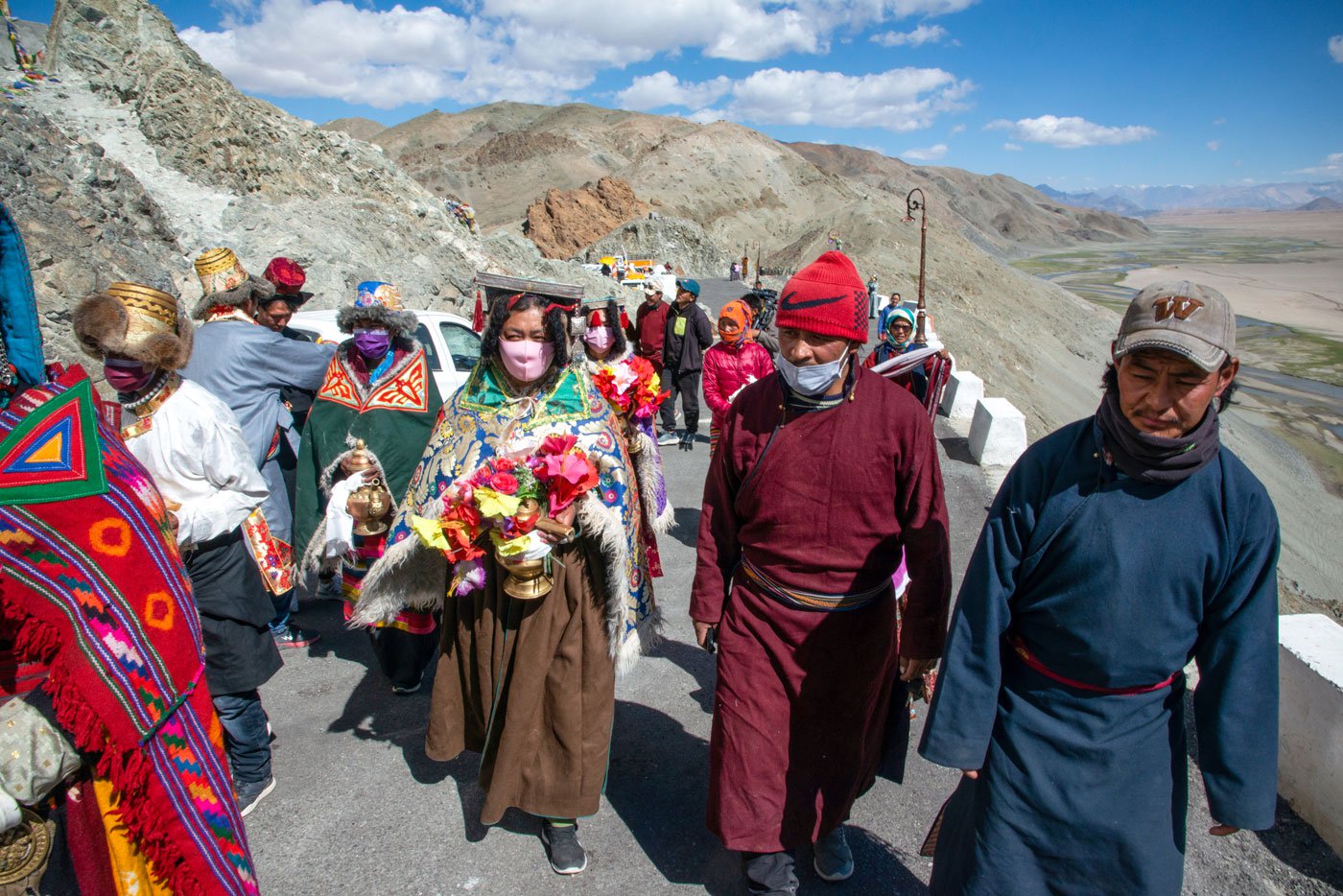
The procession of devotees from the six hamlets walk through the corridor into the monastery
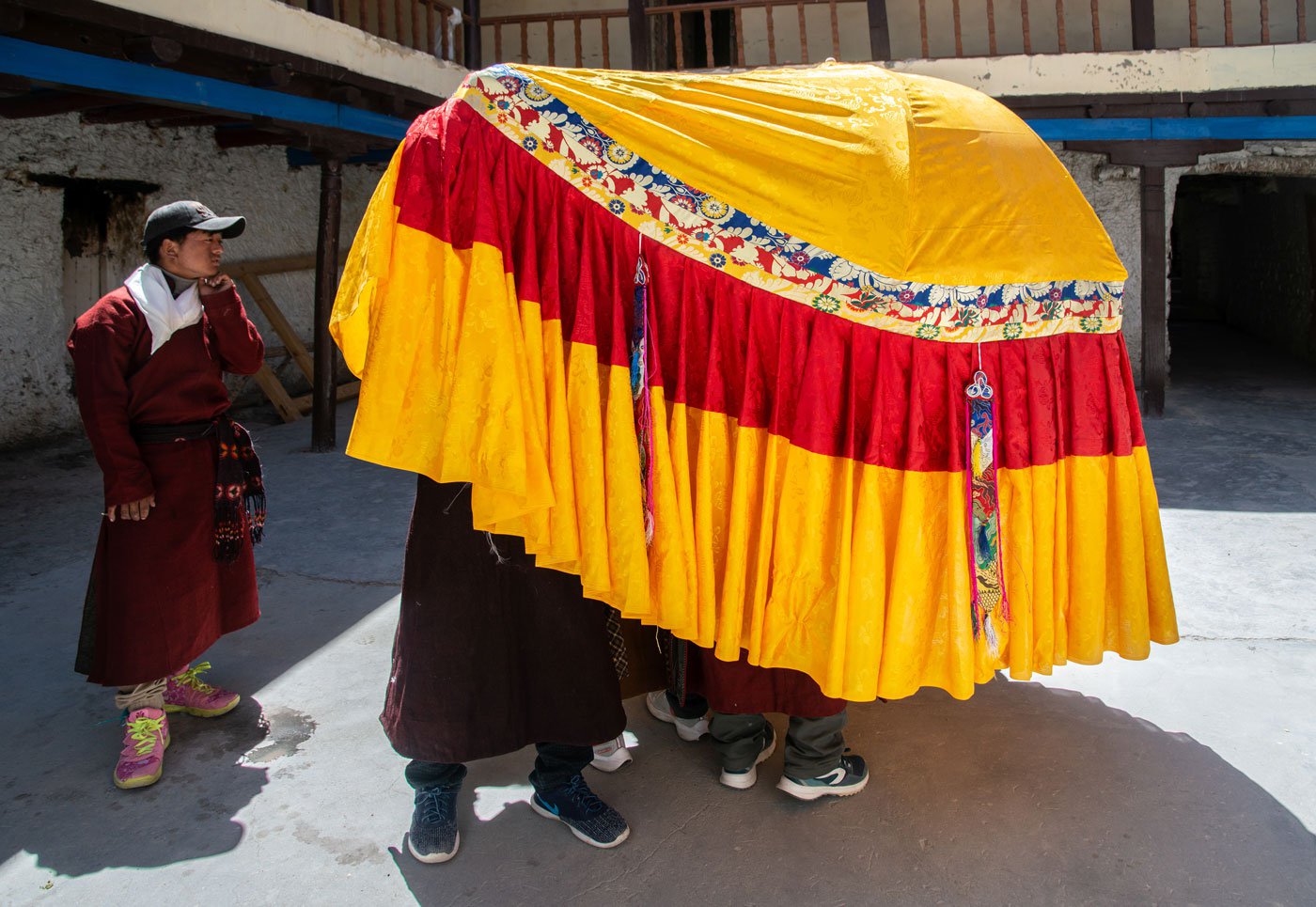
The monks at the monastery in Hanle prepare a big umbrella, known as ' Utuk ' for the Saga Dawa ceremony
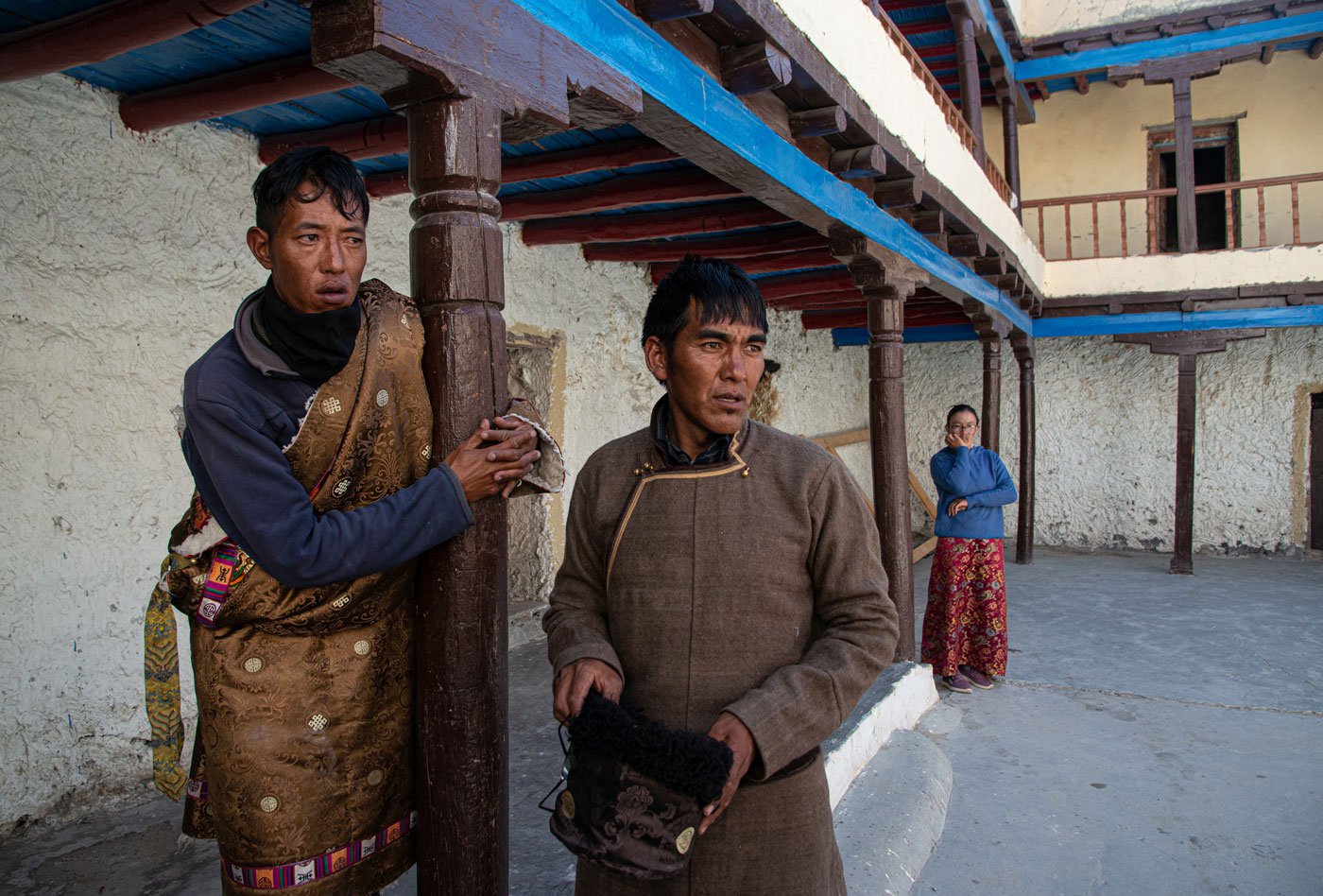
Inside the monastery, villagers Rangol (left) and Kesang Angel (right) observe the prayers and ceremony
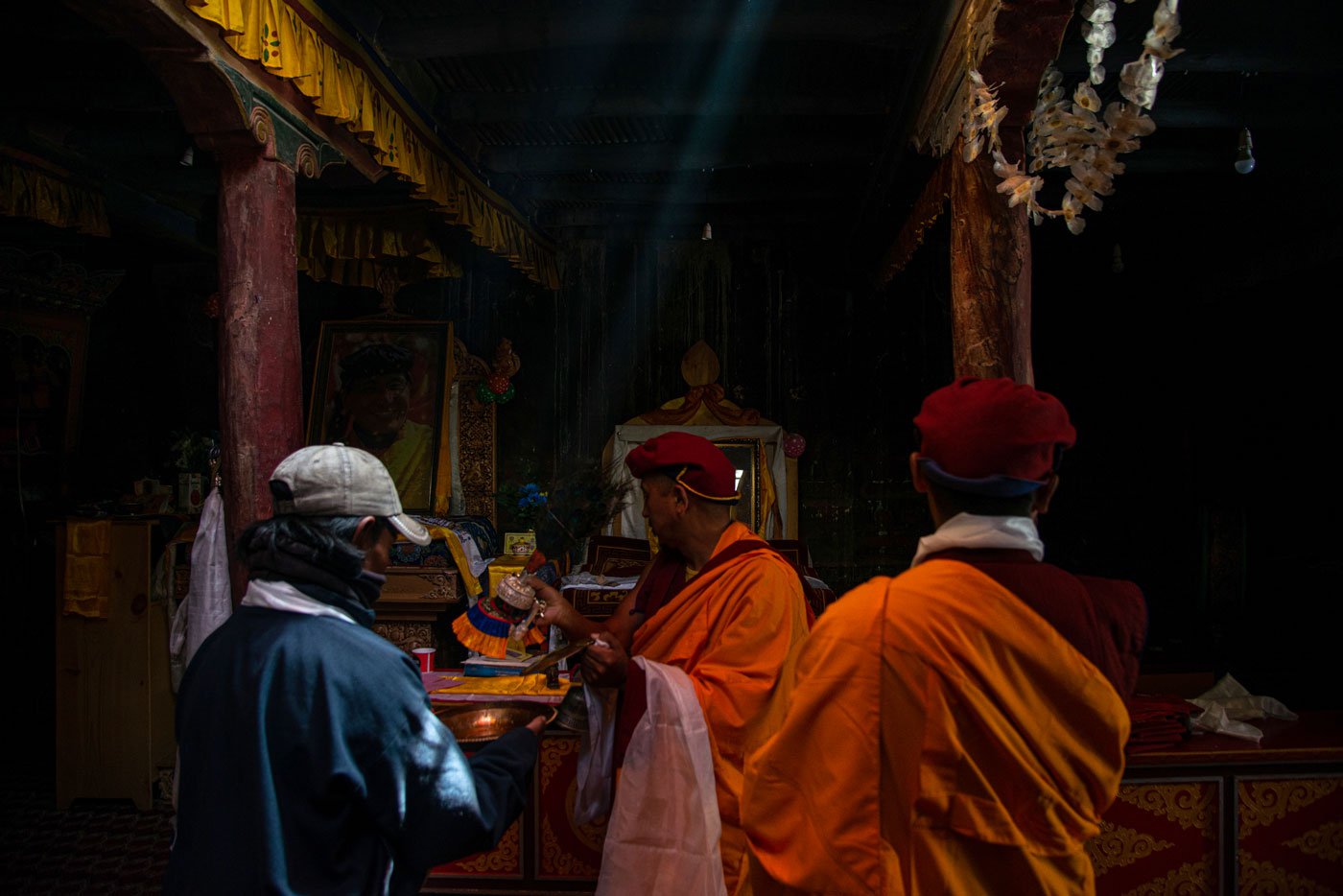
One of Hanle monastery's prominent monks performs rituals on the day of Saga Dawa
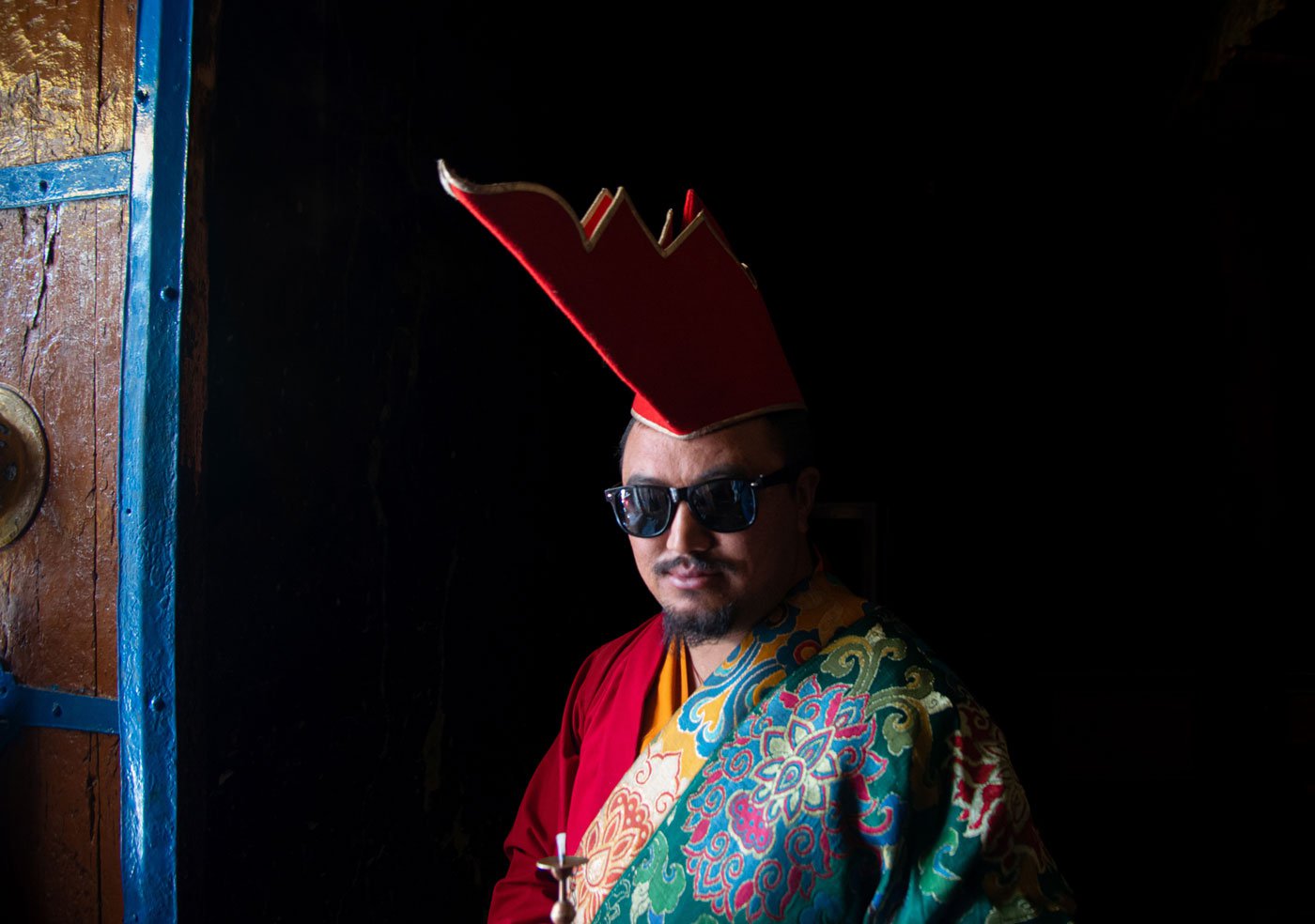
Jigmet Doshal, a monk associated with Hanle's monastery, says, 'This is also known as the month of merit. We must study more to understand the philosophies hidden behind the holy books'
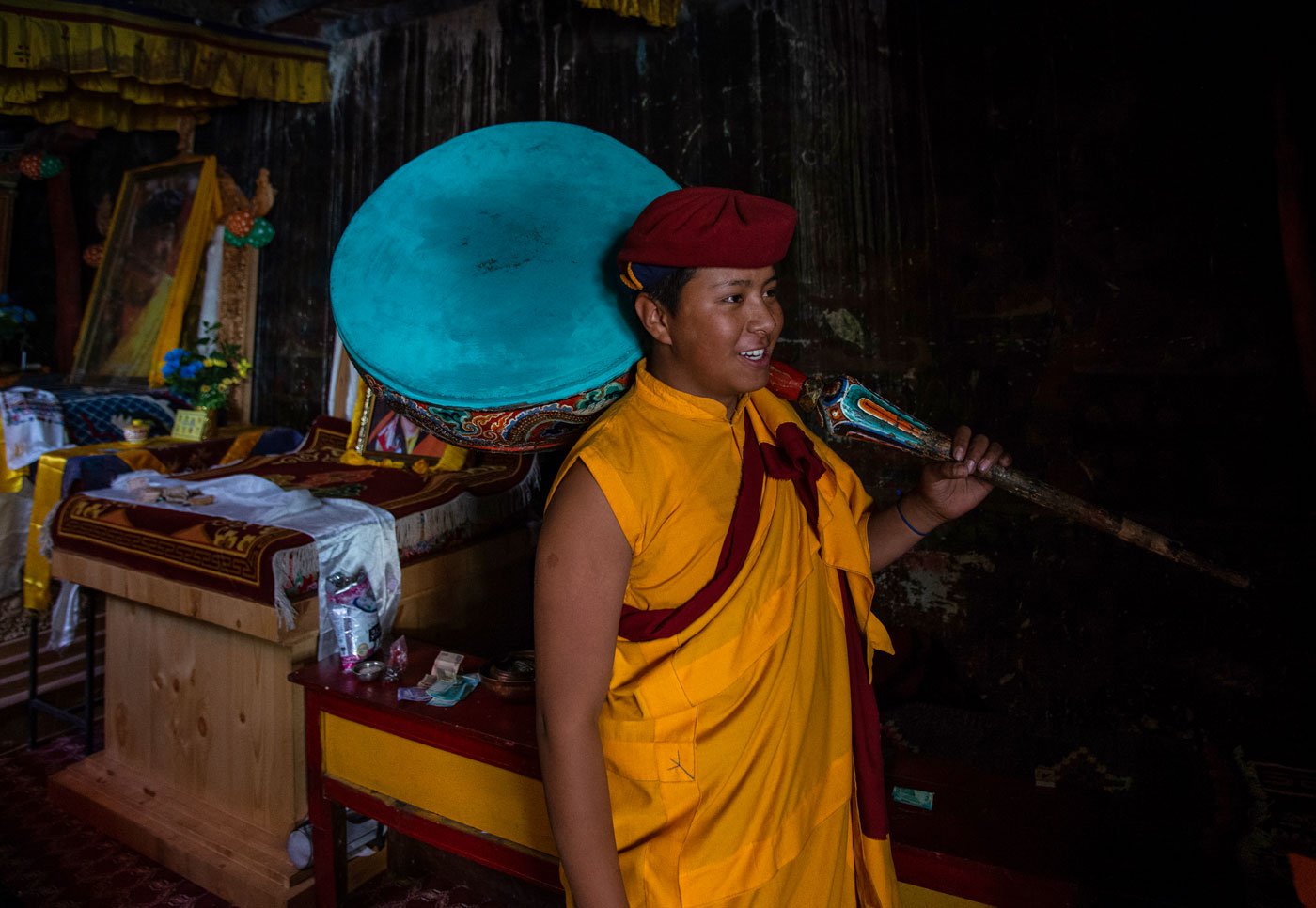
Lama
Dorje Tesring
holding a traditional musical instrument called
ang
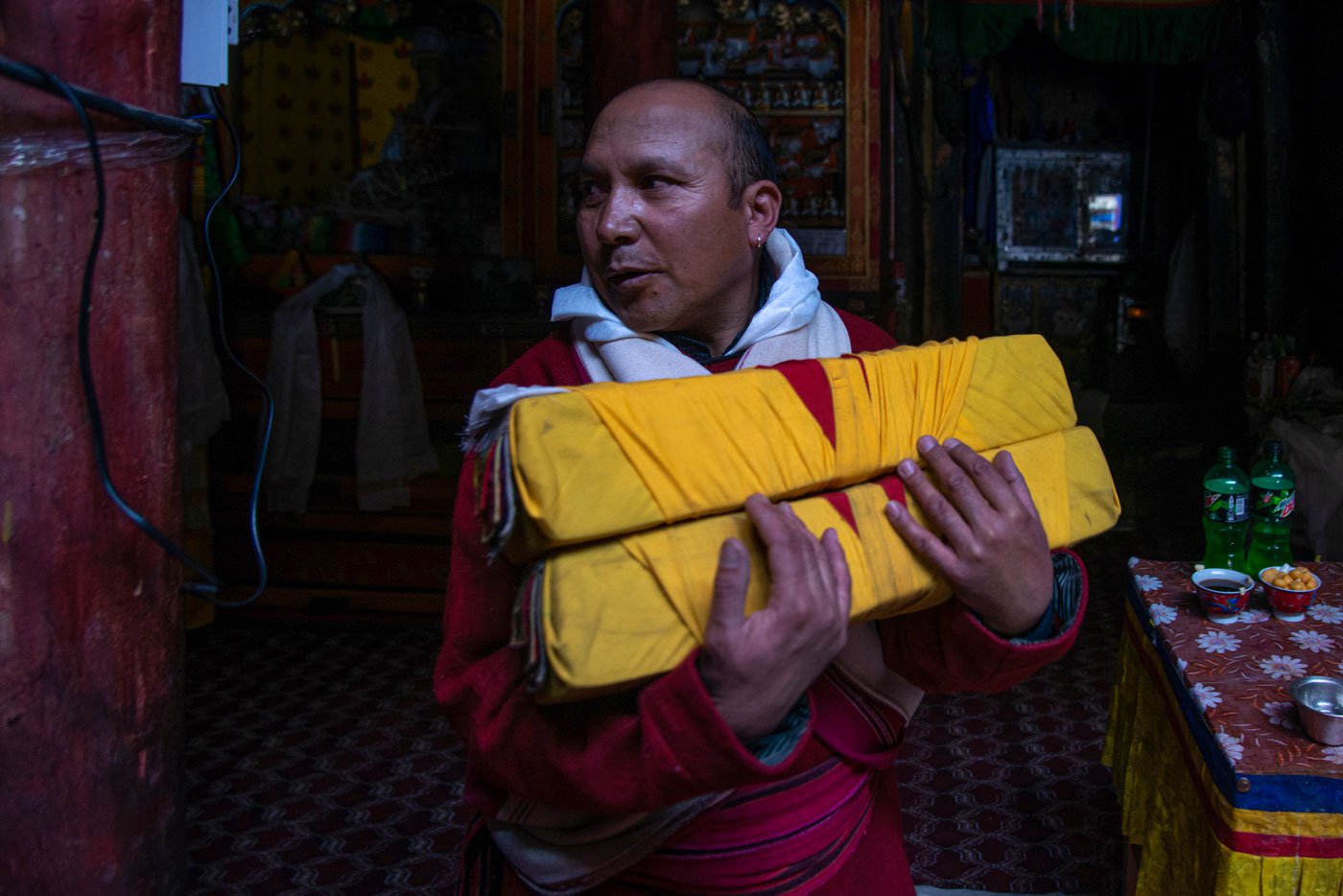
Sonam Dorje, one of the organisers of the Saga Dawa festival, carries holy scrolls from the monastery in Hanle. The scrolls accompany Buddha’s idol as it travels across villages and hamlets in the region
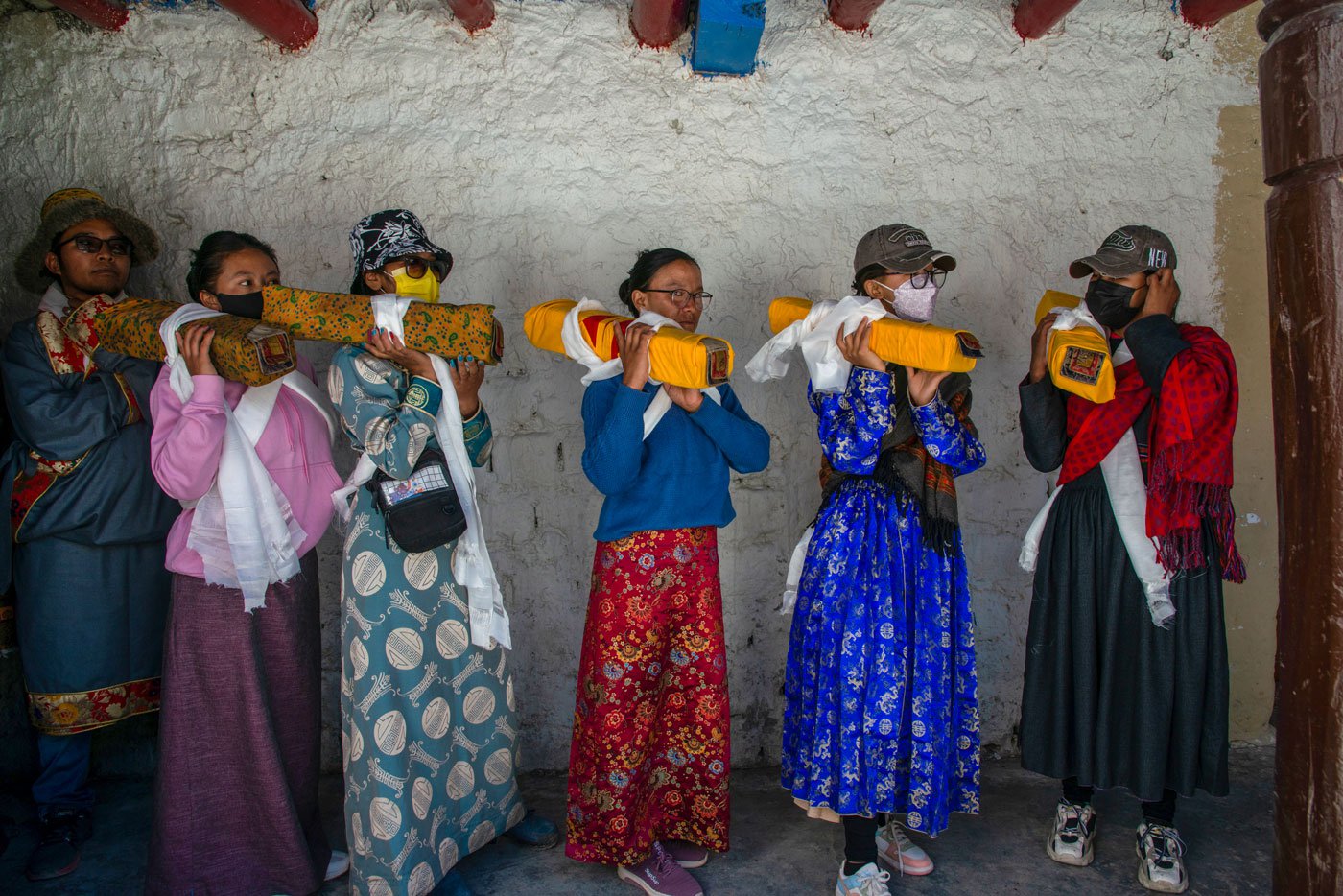
Women from different villages in Hanle River Valley carry the holy scrolls
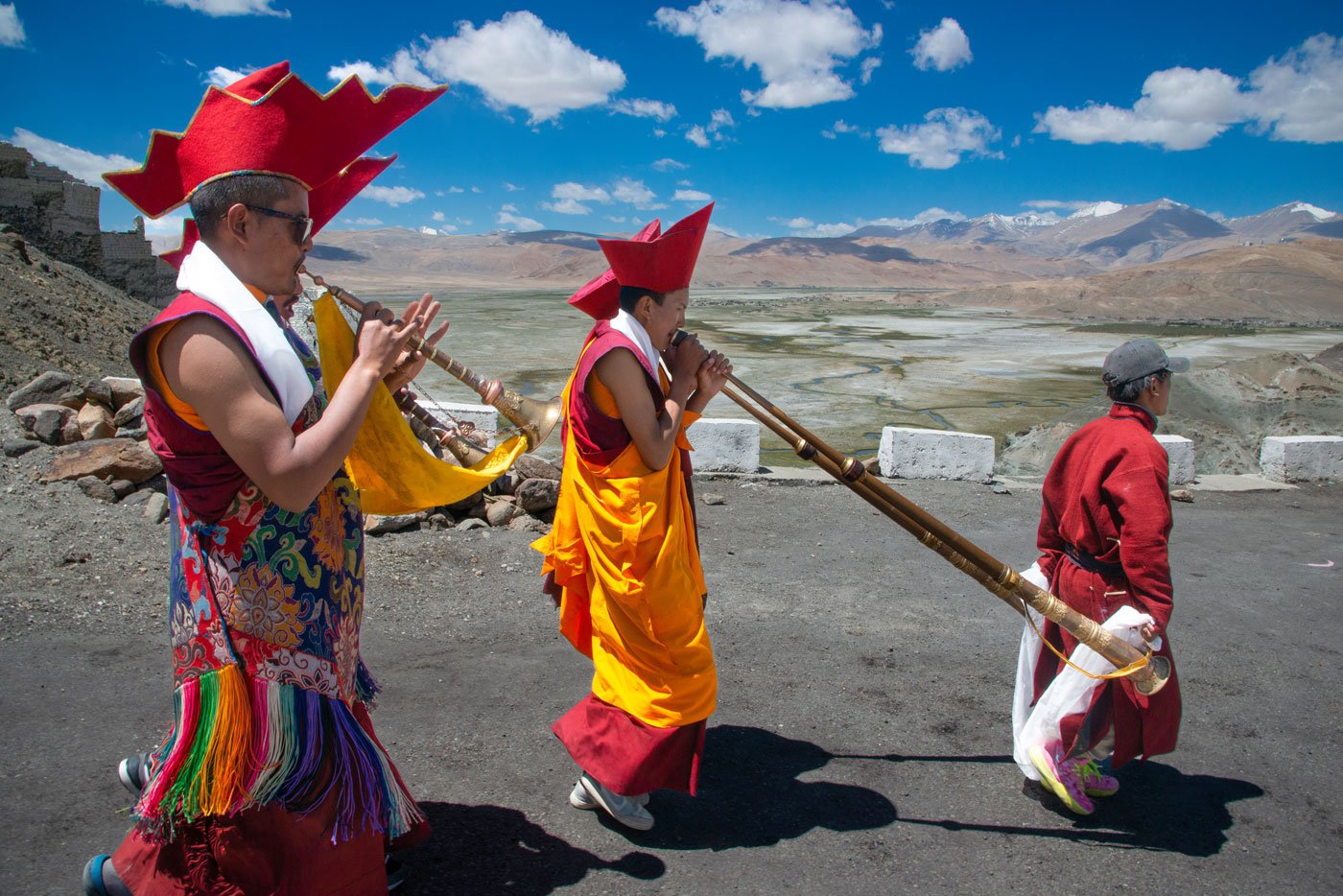
The lamas play traditional musical instruments during this festival. The shorter wind-instrument (left) is called a gelling , and the longer one (centre) is a tung
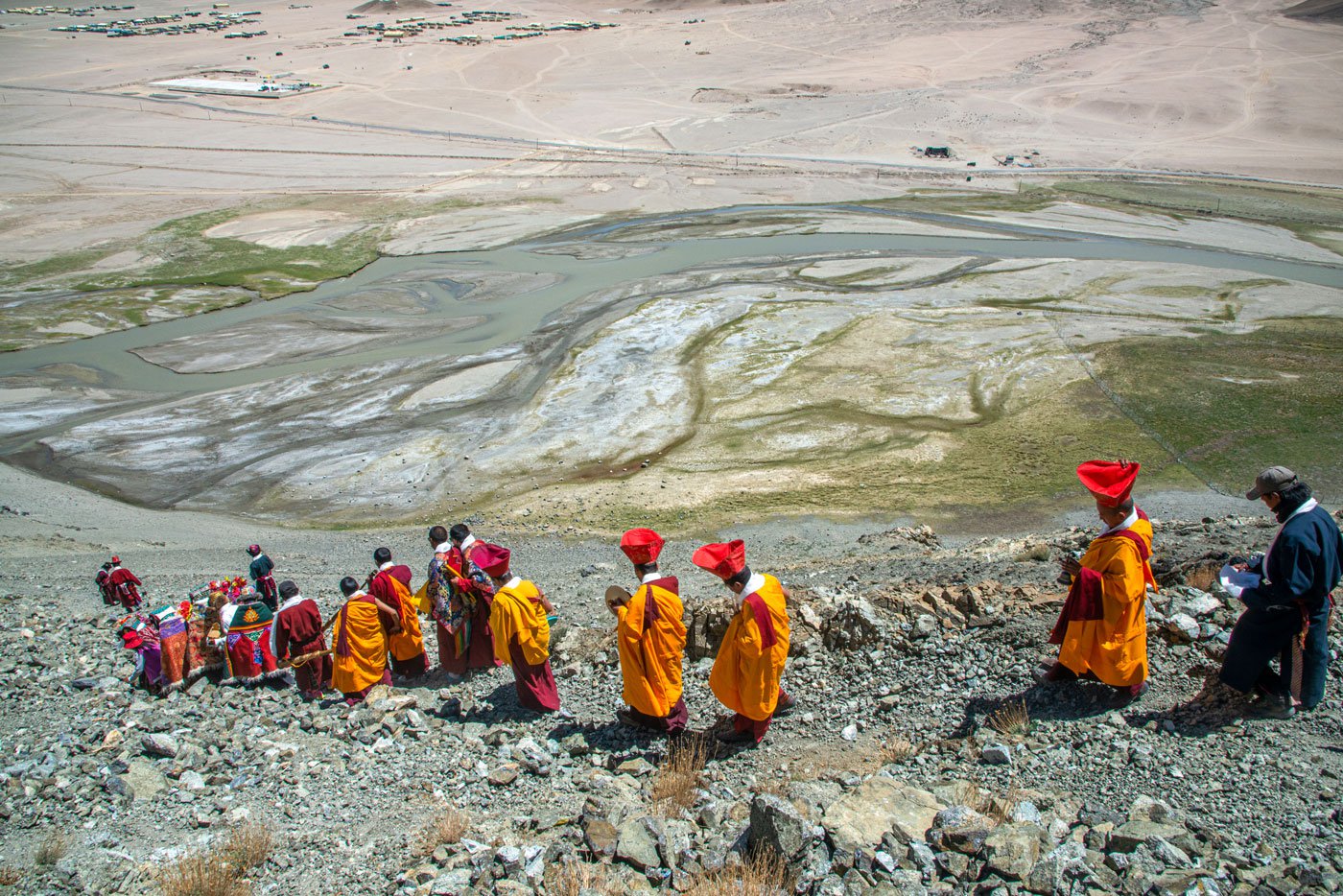
The lamas descend the steep slopes into the Hanle valley as the procession continues
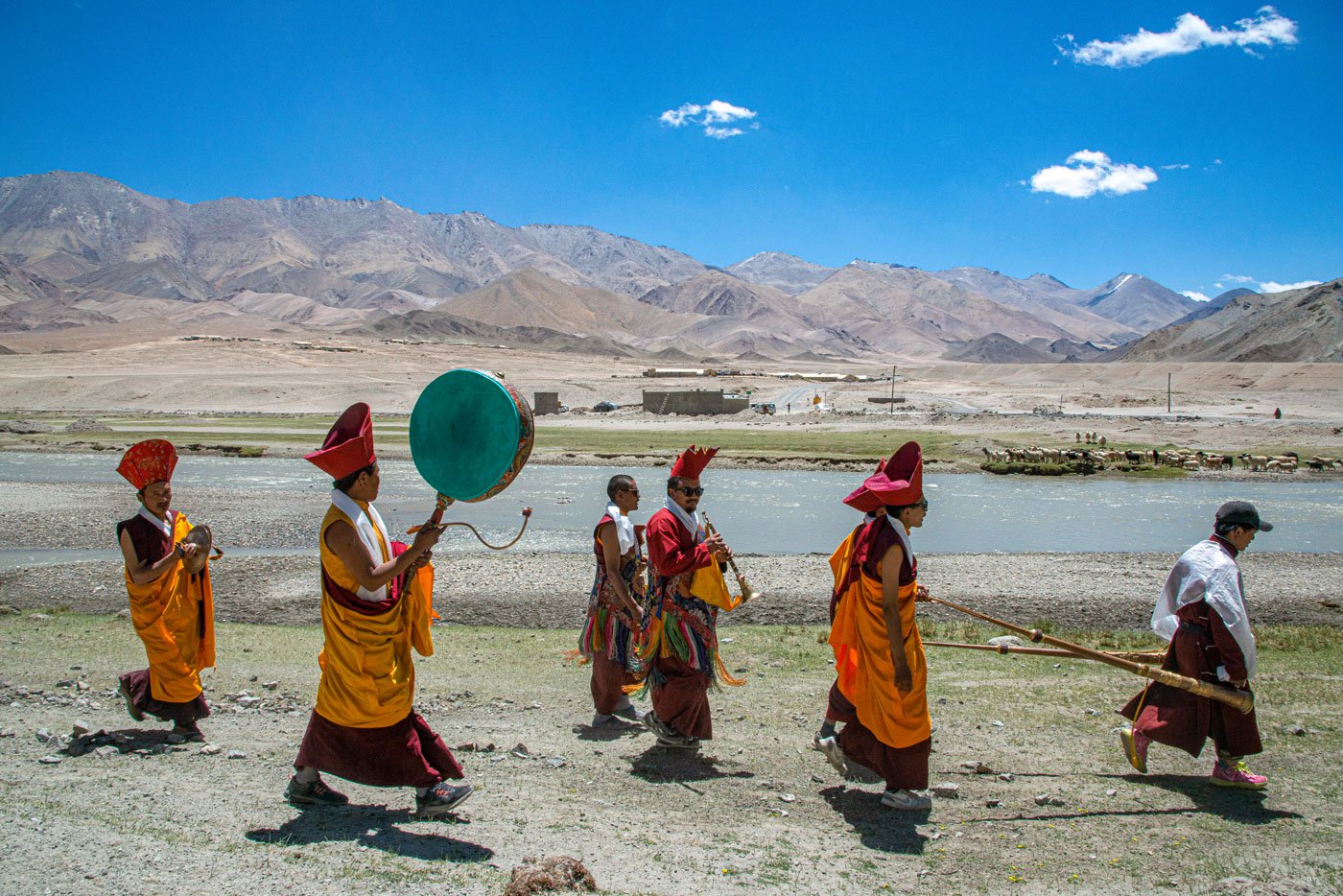
The lama’s route for this procession includes circling the Hanle monastery along the Hanle river
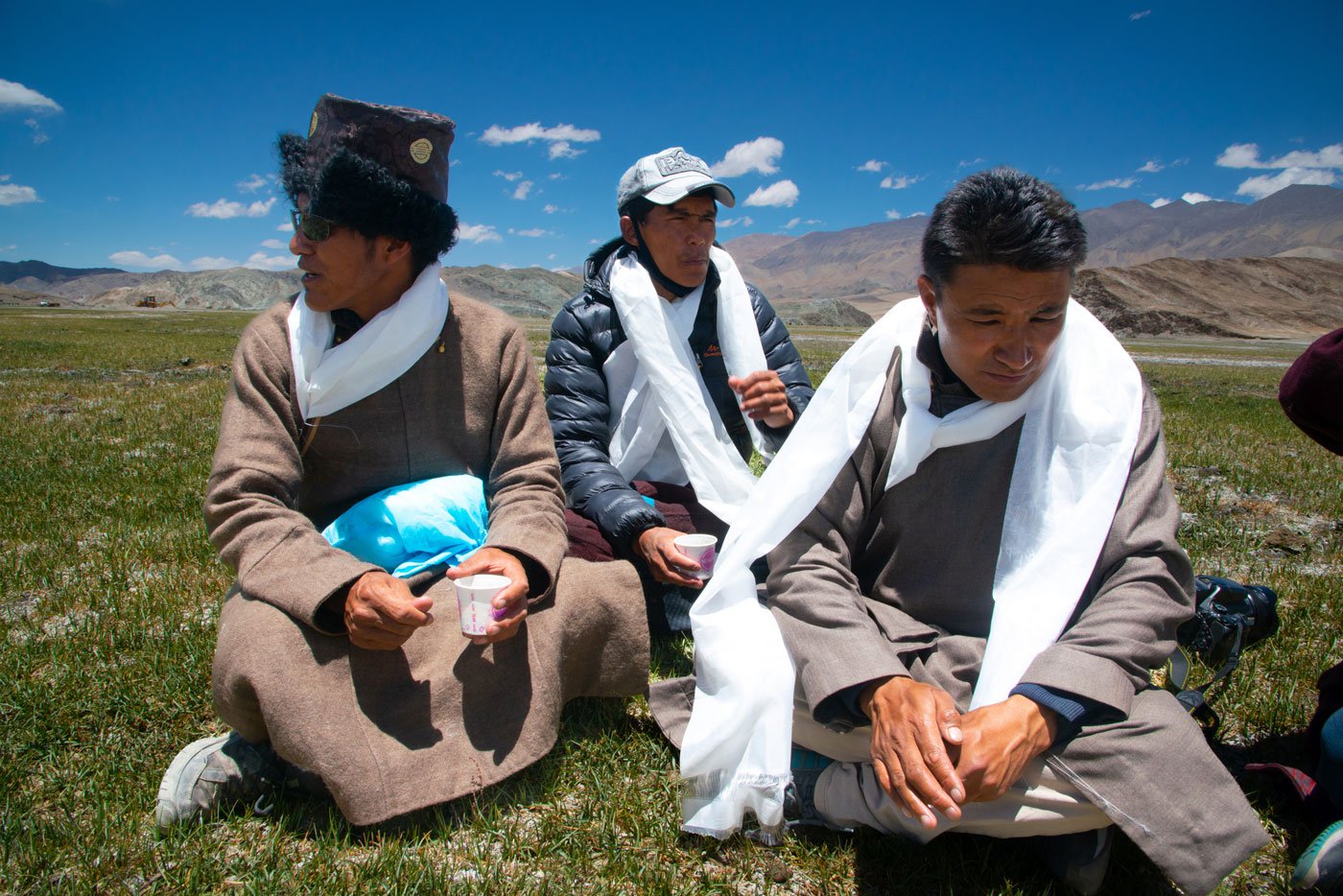
On their way to Shado village the procession takes a break to have buns, cold drinks and salt tea arranged by the people of Khuldo. Organising refreshments for the members of the procession is part of this festival's customs
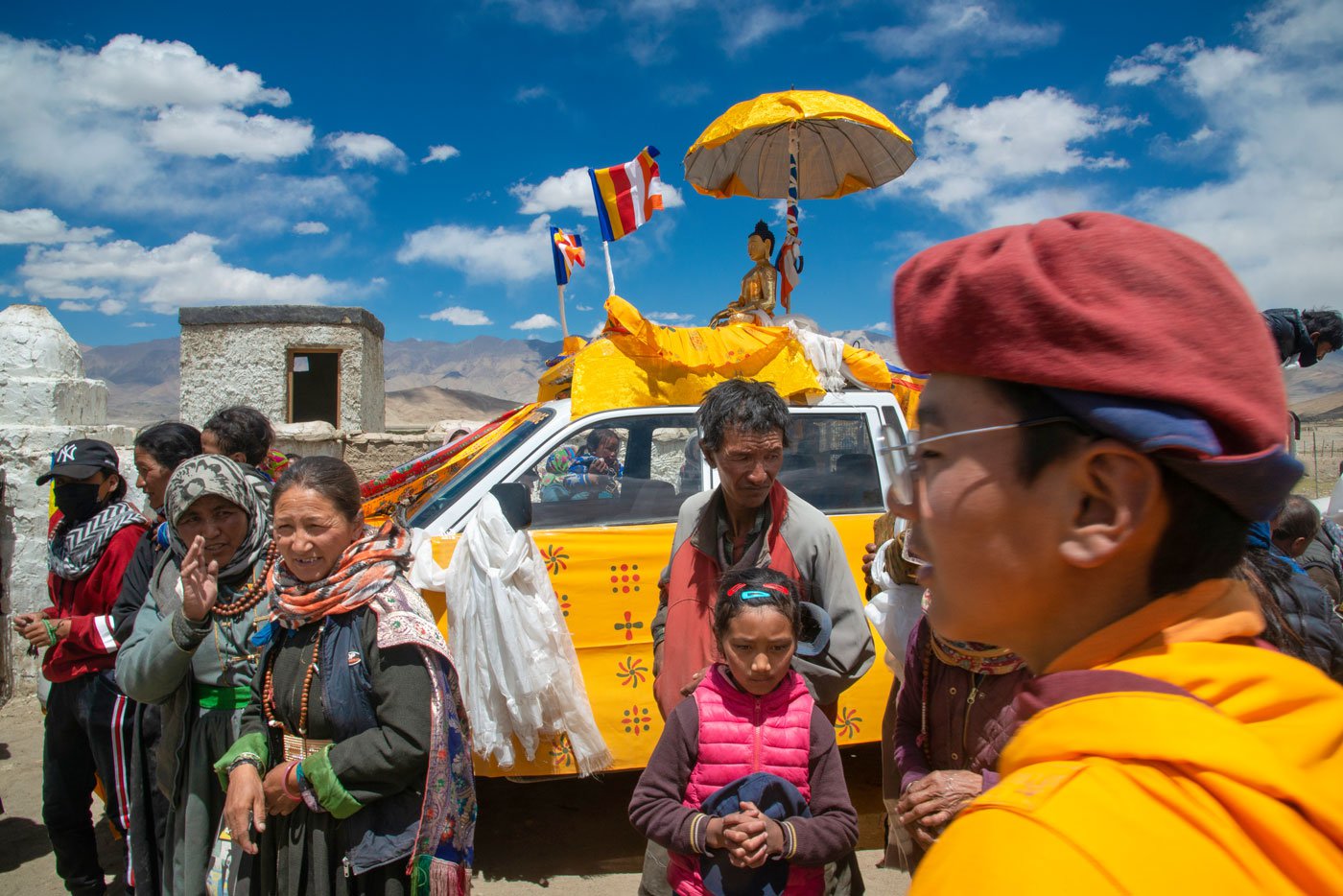
The residents of Shado village gather in Gompa to greet and meet the
lamas
who have brought holy scriptures
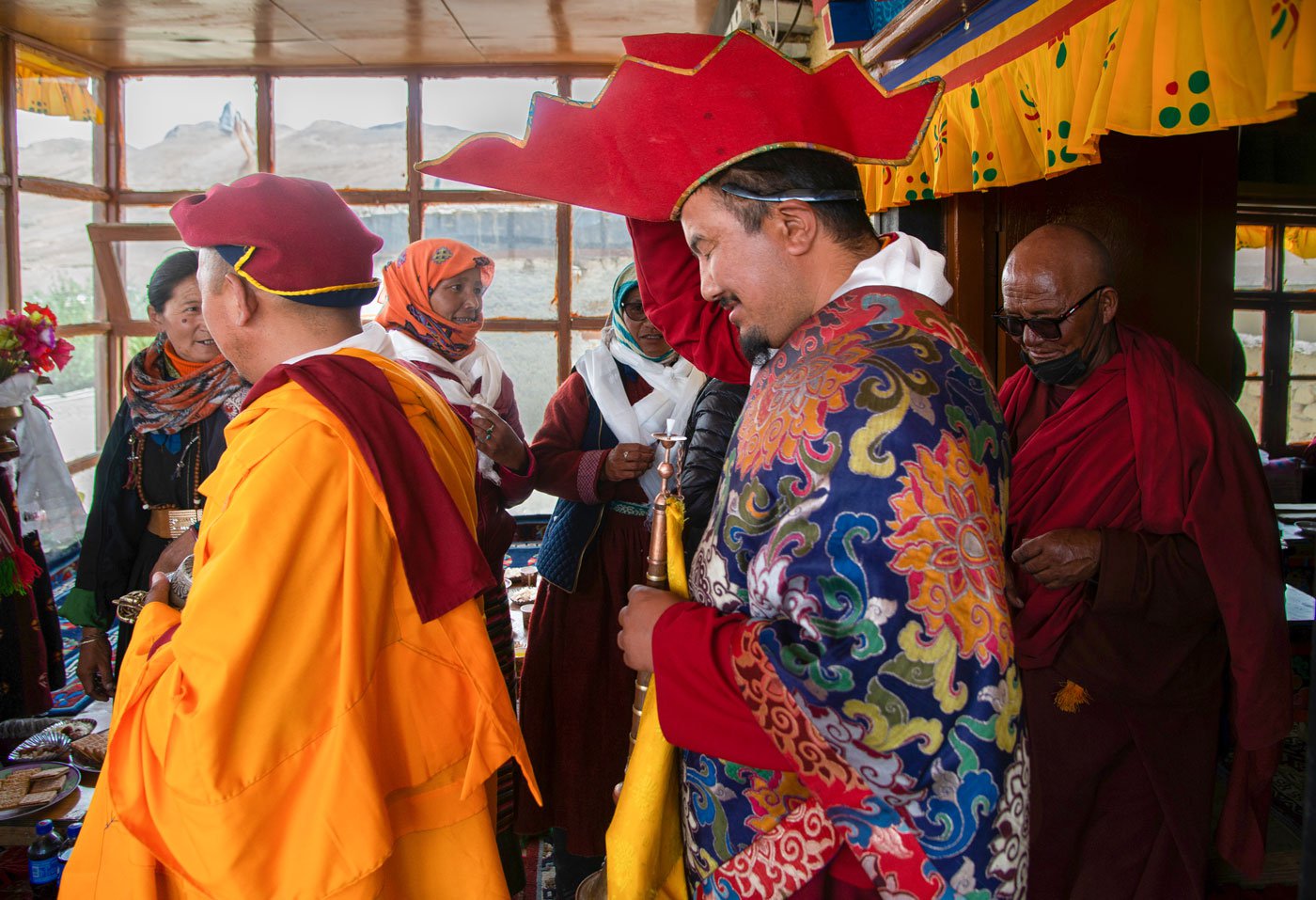
The lamas of the monastery in Hanle emerge out of the Gompa in Shado village after their prayers
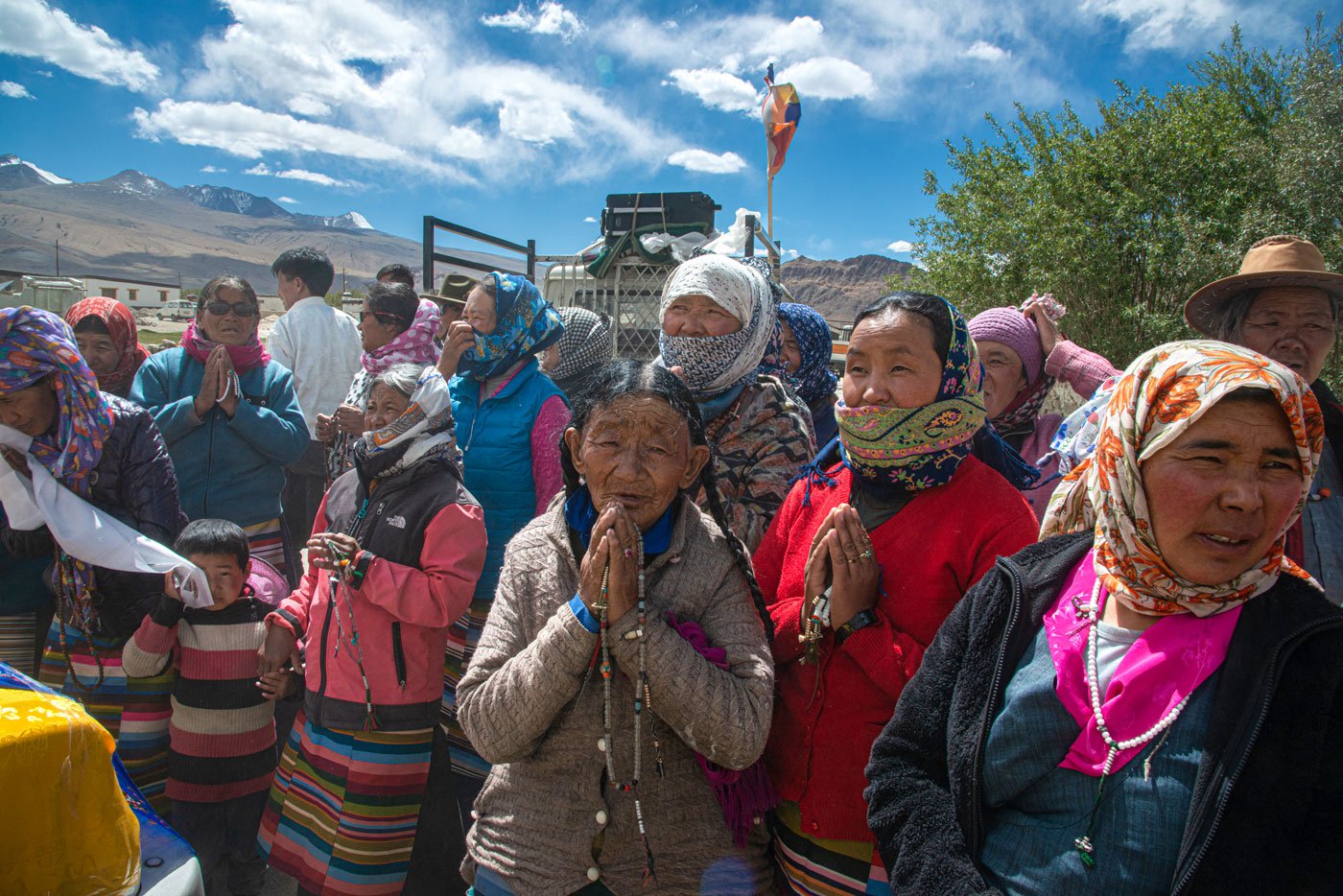
After Shado, the convoy reaches Punguk, another hamlet in Hanle valley. The villagers eagerly await the convoy’s arrival that afternoon

The procession heads towards the local Gompa in Punguk village where residents are waiting to welcome them with white scarves
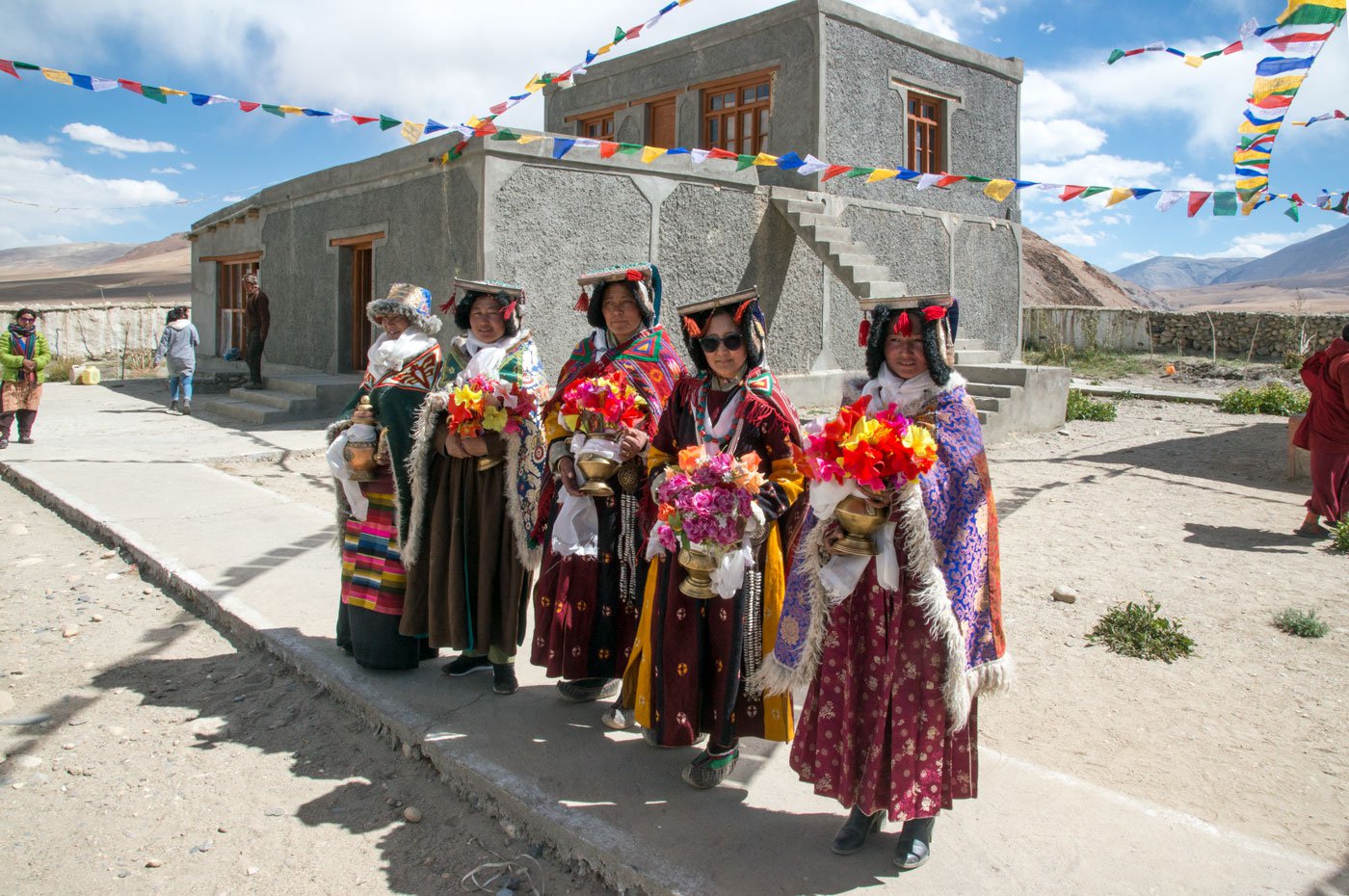
Inside the Punguk Gompa, the women dressed in their traditional attire, wait for the arrival of their friends from Khuldo
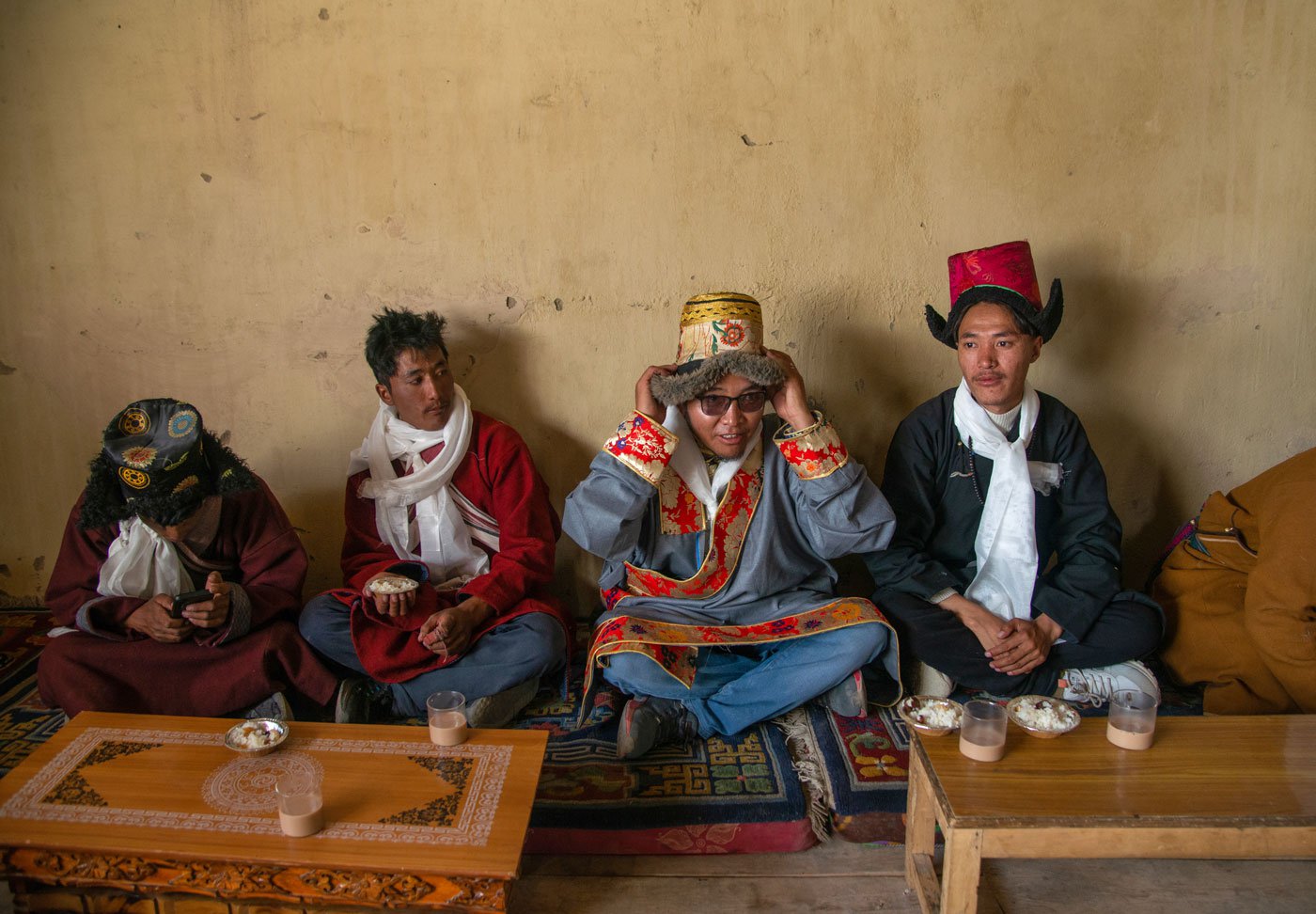
Thankchok Dorje and his friends eating their lunch and drinking salt tea inside the community hall of Punguk Gompa
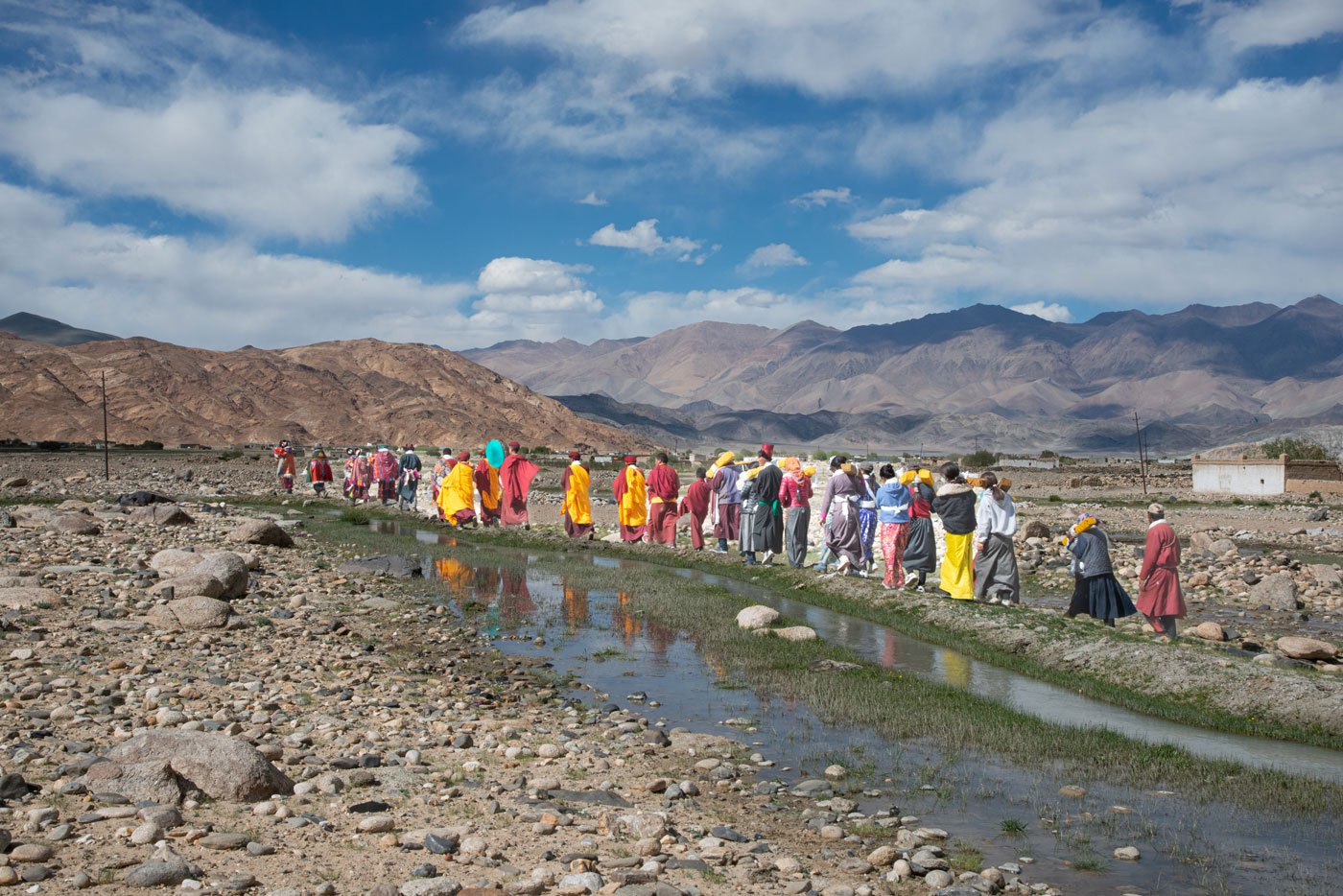
After this meal, the procession circles Pungkuk village. Not a single part of the village is missed, despite the rough terrain and windy conditions
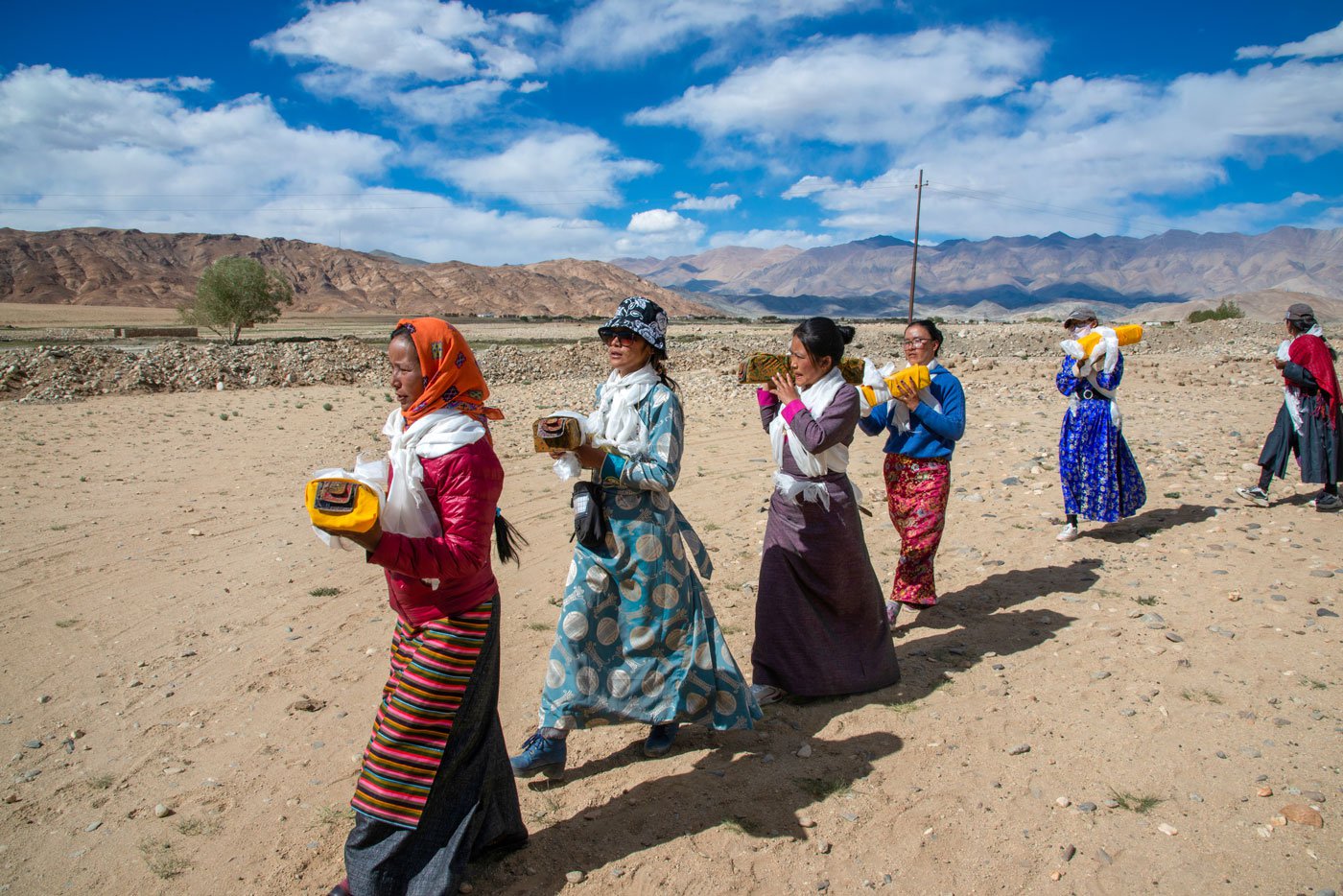
Women in the procession carry the holy scrolls on their shoulders as they walk
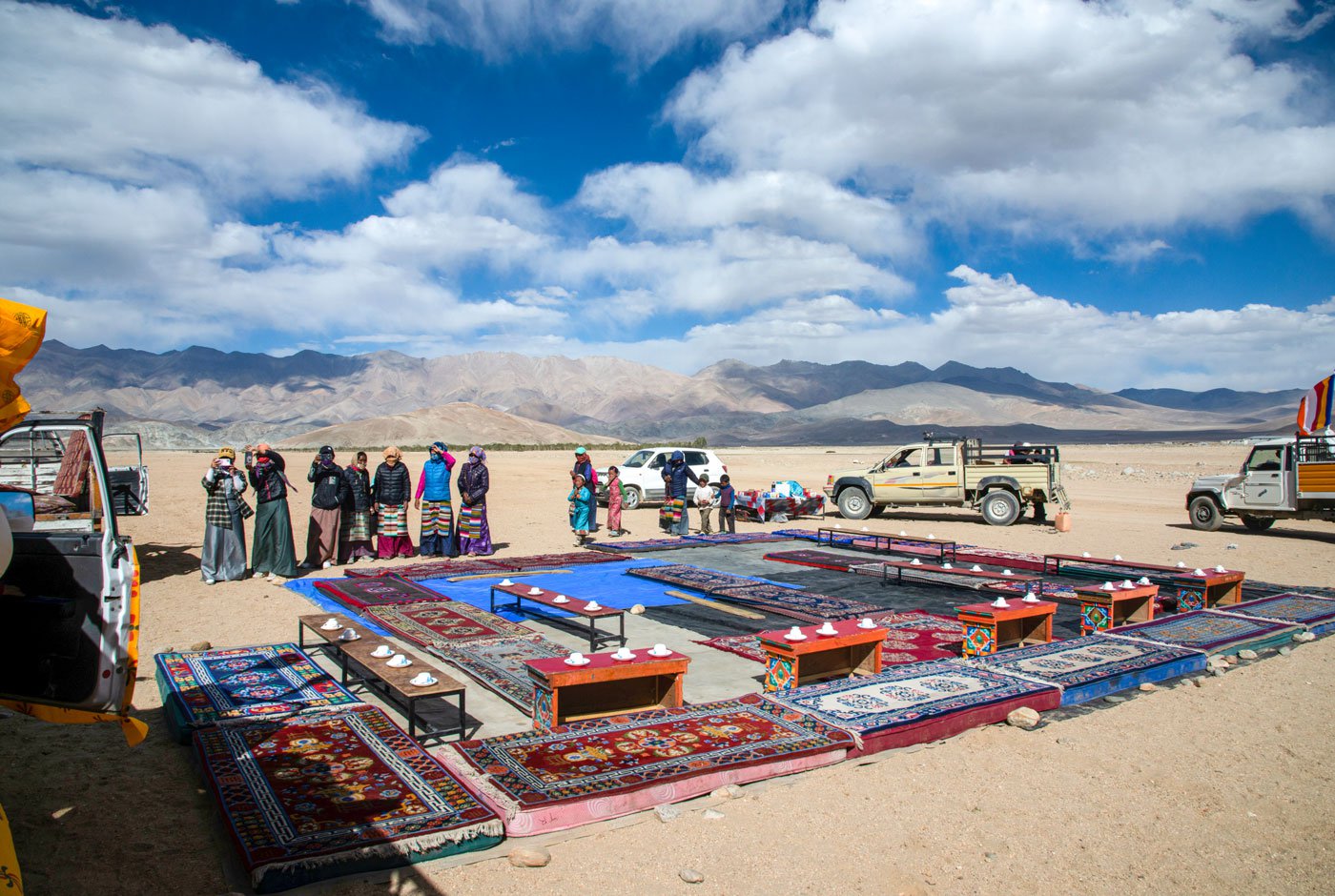
En-route to Naga Basti, the procession’s convoy stops at Bug village as residents come to seek their blessings from the lamas of Hanle monastery. They have prepared refreshments for the convoy
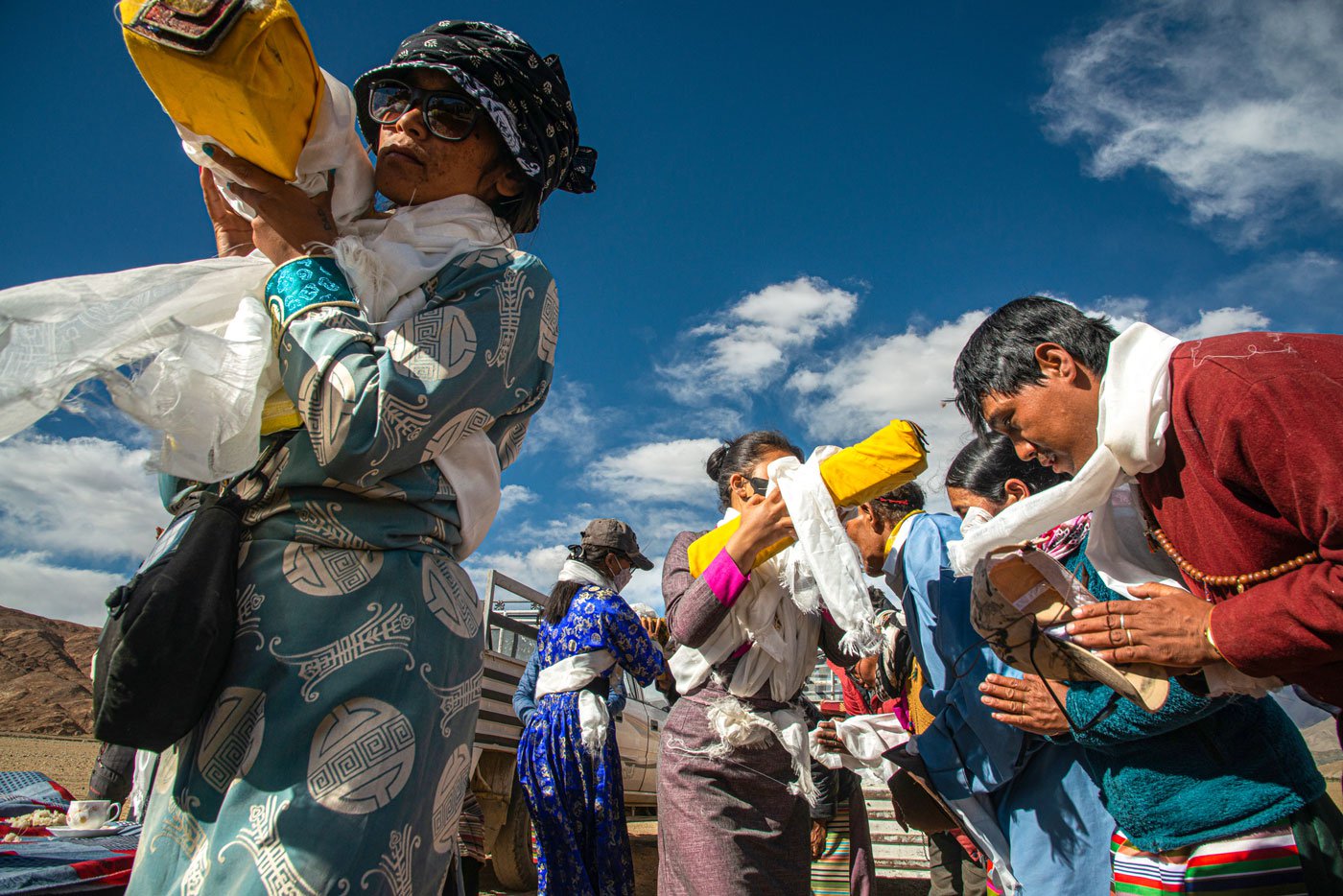
The residents of Bug village seek blessings from the holy scrolls
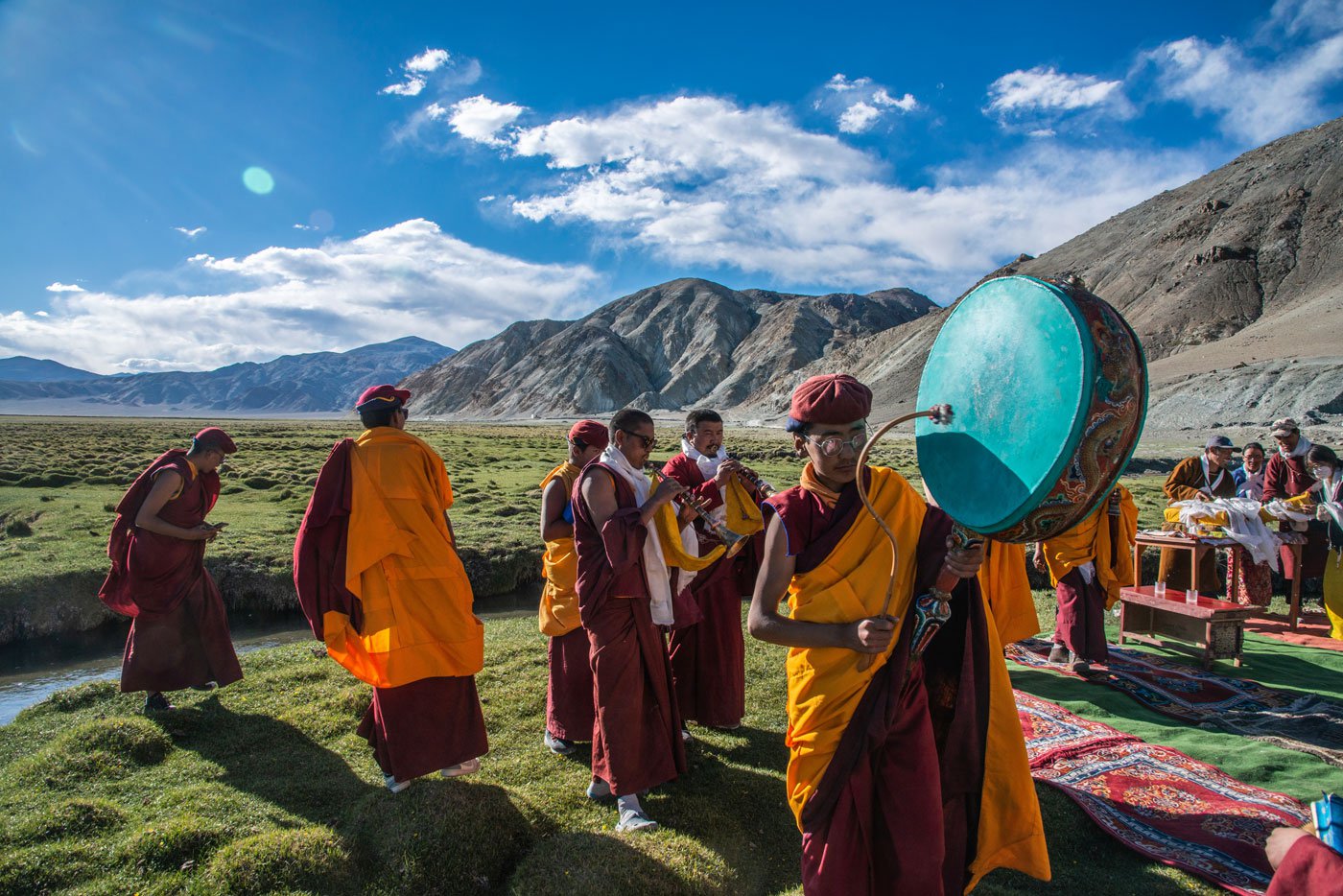
After circling every village on their route, the convoy finally stops at a beautiful grassland near Naga. The residents of this village are of Tibetan origin. With the beating of drums, the
lamas
declare the journey over
